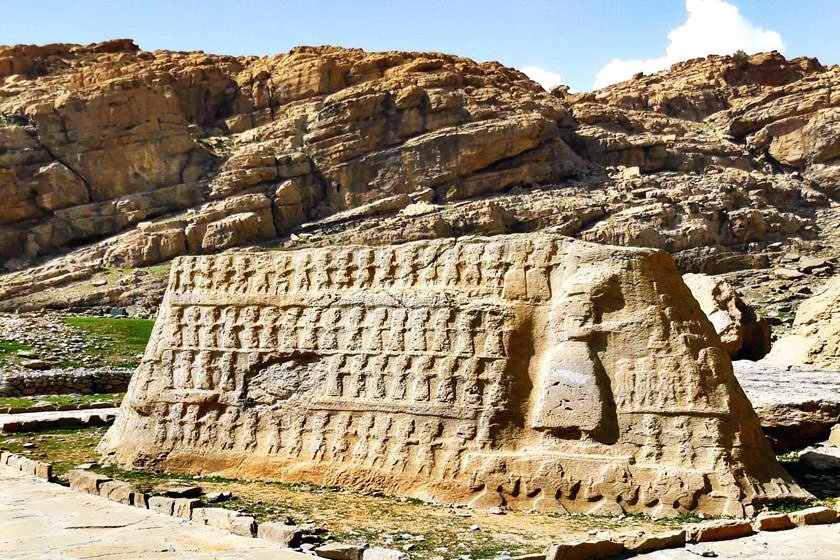Fences, sunshades installed to protect Elamite rock arts

TEHRAN – A series of fences and sunshades have been set up to protect Elamite bas-reliefs carved on a rock face near Izeh, southwest Iran.
A conservation project, which entailed the installation of metal fences, roofing covers, and shielding structures, has recently come to an end after almost two decades at Kul-e Farah in Khuzestan province, a local tourism official announced on Tuesday.
The prehistorical site, which was probably home to an Elamite temple and place of worship, includes six bas-relief carvings depicting graves, buildings, and a water canal.
The protective elements were mounted for the three of the carvings as the rest are located in safer places of the cliff, the official said.
“And, studies and researches are being done by cultural heritage experts and archeologists to find ways for their proper protection.”
Kul-e Farah ancient area was registered on the National Heritage list in 1999.
Elam was an ancient pre-Iranian civilization centered in the far-west and south-west of what is now modern-day Iran, stretching from the lowlands of what is now Khuzestan and Ilam provinces as well as a small part of southern Iraq.
Izeh is home to three UNESCO World Heritage sites of Susa, Tchogha Zanbil, and Shushtar Historical Hydraulic System yet it is a region of raw beauty where its visitors could spend weeks exploring. The province is also a cradle for handicrafts and arts whose crafters inherited from their preceding generations.
Lying at the head of the Persian Gulf and bordering Iraq on the west, Khuzestan was settled about 6000 BC by a people with affinities to the Sumerians, who came from the Zagros Mountains region. Urban centers appeared there nearly contemporaneously with the first cities in Mesopotamia in the 4th millennium. Khuzestan, according to Encyclopedia Britannica, came to constitute the heart of the Elamite kingdom, with Susa as its capital.
ABU/AFM
Leave a Comment